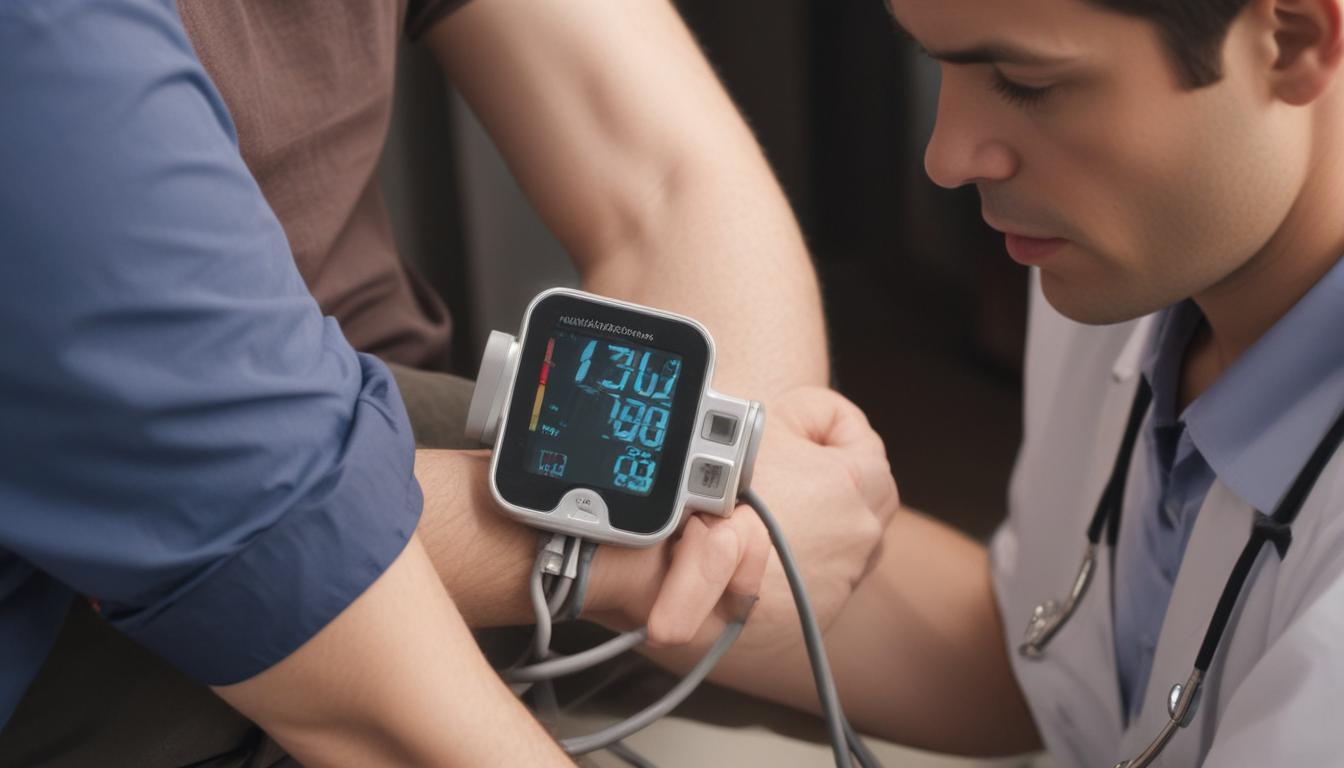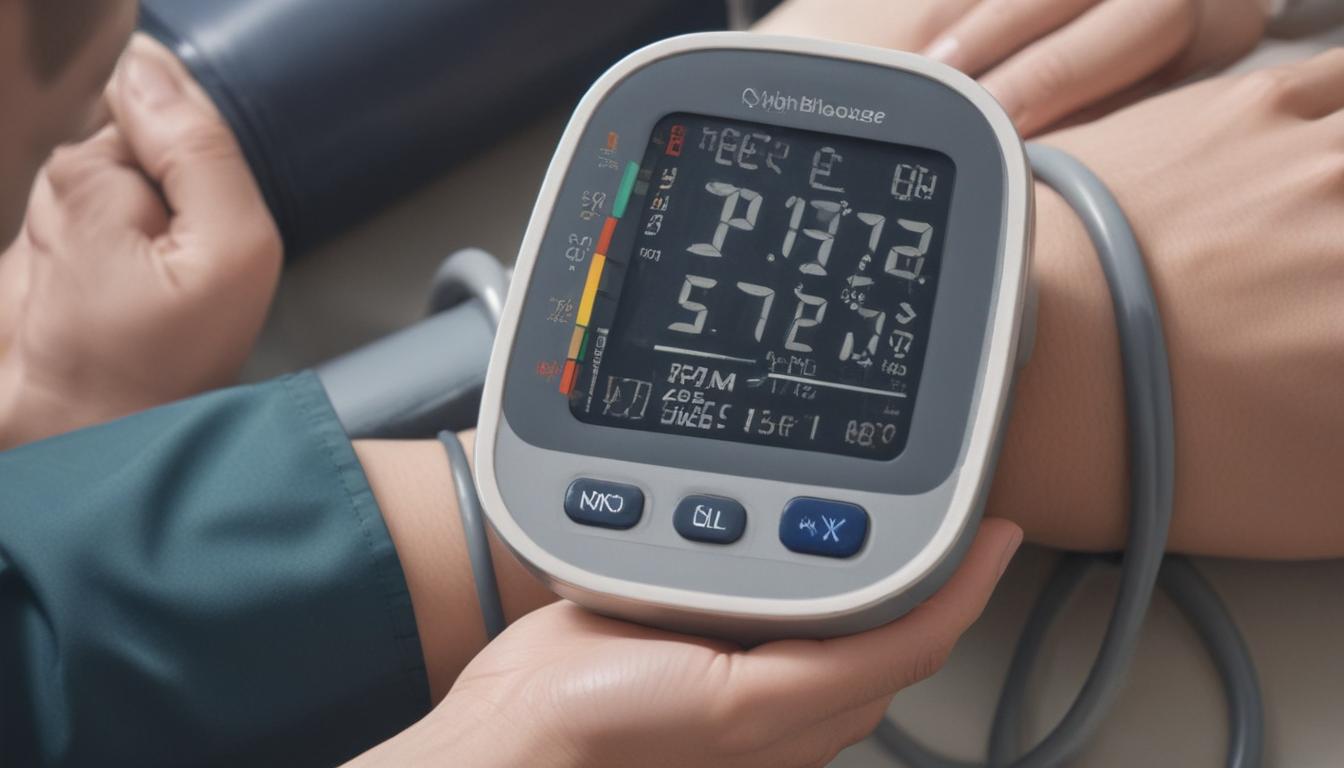Now Reading: High Blood Pressure Explained Simply
- 01
High Blood Pressure Explained Simply
High Blood Pressure Explained Simply

High Blood Pressure Explained Your Guide to a Healthier Life
Understanding High Blood Pressure Your Complete Guide
That moment in the doctor’s office can be jarring. You see the numbers on the blood pressure cuff’s display, and your doctor tells you they are high. Suddenly, you’re faced with a diagnosis that sounds serious, but you might not fully understand what it means for your daily life. The confusion, worry, and questions can be overwhelming. What did I do wrong? Is this permanent? What do I need to change? The good news is that you are not alone, and knowledge is your most powerful tool.
This guide is here to cut through the medical jargon and provide you with clear, straightforward information. Understanding high blood pressure is the first and most critical step toward managing it effectively. By learning what’s happening inside your body and the practical steps you can take, you can move from a place of uncertainty to a position of control. You can take charge of your health, and it starts right here.
What Is High Blood Pressure Really
At its core, blood pressure is the force of your blood pushing against the walls of your arteries as your heart pumps it around your body. Think of it like the water pressure in a garden hose. A healthy level of pressure is necessary to deliver oxygen and nutrients to all your tissues and organs. When you get a reading, it’s given as two numbers, such as 120/80. The first number (systolic) measures the pressure when your heart beats, and the second number (diastolic) measures the pressure when your heart rests between beats. High blood pressure, or hypertension, occurs when this force is consistently too high, putting extra strain on your heart and blood vessels.
This sustained strain is why hypertension is often called the “silent killer.” For most people, it develops slowly over many years without any obvious symptoms. All the while, the excess pressure is silently damaging your arteries, making them less elastic and more prone to plaque buildup. This damage forces your heart to work harder to pump blood, which can lead to a thickened and weakened heart muscle. Over time, this can significantly increase your risk for serious health problems, including heart attack, stroke, kidney disease, and vision loss. It is not just a number on a screen; it is a critical indicator of your long-term cardiovascular health.

The Causes and Risk Factors You Can Influence
High blood pressure can be divided into two main types. The vast majority of cases are known as primary (or essential) hypertension, which means there is no single, identifiable cause. Instead, it’s believed to be the result of a combination of factors that develop over time. Many of these are lifestyle-related and, most importantly, are within your power to change. A diet high in sodium and processed foods, a sedentary lifestyle with little physical activity, being overweight or obese, and chronic stress are all major contributors to rising blood pressure. Excessive alcohol consumption and tobacco use also play a significant role by directly damaging your arteries and increasing your heart rate.
While lifestyle is a huge component, there are also risk factors that you cannot change. Age is a primary one; the risk of developing high blood pressure increases as you get older. Family history and genetics also play a crucial part. If your parents or other close blood relatives have hypertension, you are more likely to develop it yourself. Certain ethnic groups, including people of African heritage, are often at a higher risk and may develop high blood pressure earlier in life. Understanding all of these factors—both the ones you can control and the ones you can’t—gives you a complete picture of your personal risk and highlights the importance of proactive health management.
Your Path to Lowering Blood Pressure and Taking Control
Receiving a high blood pressure diagnosis is not a life sentence; it is a call to action. The journey to lower your numbers and protect your health involves a combination of smart lifestyle adjustments and, in some cases, medical support. By focusing on proven strategies, you can make a profound impact on your well-being and significantly reduce your risk of complications.
Lifestyle Changes That Make a Difference
Your daily habits have a direct and powerful effect on your blood pressure. One of the most effective changes you can make is to your diet. Adopting an eating plan like the DASH (Dietary Approaches to Stop Hypertension) diet, which emphasizes fruits, vegetables, whole grains, and lean proteins, can lower blood pressure significantly. A key part of this is reducing your sodium intake. This means cutting back on processed foods, canned soups, frozen dinners, and fast food, and instead flavoring your meals with herbs and spices. At the same time, increasing your potassium intake from sources like bananas, spinach, and sweet potatoes helps to balance sodium levels and ease tension in your blood vessel walls.
Regular physical activity is another cornerstone of blood pressure management. You don’t need to become a marathon runner; consistency is more important than intensity. Aim for at least 150 minutes of moderate-intensity exercise, such as brisk walking, swimming, or cycling, each week. Exercise strengthens your heart, allowing it to pump more blood with less effort, which in turn decreases the force on your arteries. Beyond diet and exercise, managing stress through practices like meditation, yoga, or spending time in nature can have a calming effect on your nervous system. Limiting alcohol and quitting smoking are also critical, as they provide immediate and long-term benefits for your entire cardiovascular system.
The Role of Medication and Your Doctor
For some people, lifestyle changes alone may not be enough to reach a healthy blood pressure goal, and that is perfectly okay. Medication is not a sign of failure but a powerful tool to protect your body from damage. There are many different types of blood pressure medications, and your doctor will work with you to find the one—or combination—that is most effective and has the fewest side effects for you. These medications work in various ways, such as helping your body get rid of excess sodium and water or relaxing your blood vessels.
Building a strong, collaborative relationship with your healthcare provider is essential for success. This means attending regular check-ups, taking your medication exactly as prescribed, and being open about any challenges or side effects you experience. Monitoring your blood pressure at home can also provide valuable information for you and your doctor, helping to track your progress and adjust your treatment plan as needed. Remember, managing high blood pressure is a long-term commitment. By combining healthy habits with the right medical support, you are investing in a longer, healthier, and more vibrant life.



































